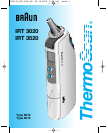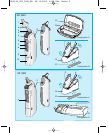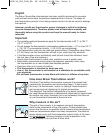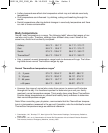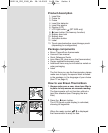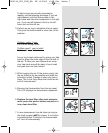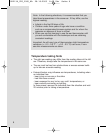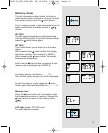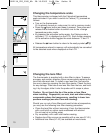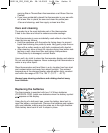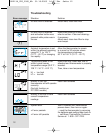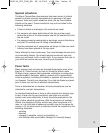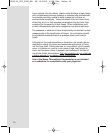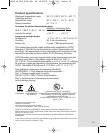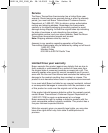
• Axillary temperatures reflect skin temperature which may not indicate core body
temperature.
• Oral temperatures are influenced by drinking, eating and breathing through the
mouth.
• Rectal temperatures often lag behind changes in core body temperature and there
is a risk of cross-contamination.
Body temperature
Normal body temperature is a range. The following table
1
shows that ranges of nor-
mal also vary by site. Therefore, readings from different sites, even if taken at the
same time, should not be directly compared.
• Also, a person’s normal temperature range tends to decrease with age. The follow-
ing table shows normal ThermoScan ranges by age.
Normal ThermoScan temperature ranges
2
• However, the range of normal also varies from person to person and fluctuates
throughout the day. It is therefore important to determine your and your family
members’ normal temperature ranges. This is easily done using Braun ThermoScan.
Practice taking temperatures on yourself and healthy family members to determine
their normal temperature ranges.
Note: When consulting your physician, communicate that the ThermoScan tempera-
ture is a temperature measured in the ear and if possible, note the individual’s normal
ThermoScan temperature range as additional reference.
1. Chamberlain, J.M., Terndrup, T.E., New Light on Ear Thermometer Readings, Contemporary Pediatrics,
March 1994.
2. Chamberlain, J.M., et al., Determination of Normal Ear Temperature with an Infrared Emission Detection
Thermometer, Annals of Emergency Medicine, January 1995.
5
Axillary: 94.5 °F - 99.1 °F 34.7 °C - 37.3 °C
Oral: 95.9 °F - 99.5 °F 35.5 °C - 37.5 °C
Rectal: 97.9 °F - 100.4 °F 36.6 °C - 38.0 °C
ThermoScan
2
: 96.4 °F - 100.4 °F 35.8 °C - 38.0 °C
0 - 2 years 97.5 °F - 100.4 °F 36.4°C - 38.0 °C
3 - 10 years 97.0 °F - 100.0 °F 36.1°C - 37.8 °C
11 - 65 years 96.6 °F - 99.7 °F 35.9°C - 37.6 °C
> 65 years 96.4 °F - 99.5 °F 35.8°C - 37.5 °C
6012136_IRT_3000_NA 28.10.2005 8:20 Uhr Seite 5



